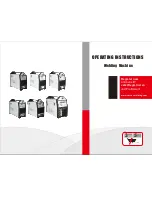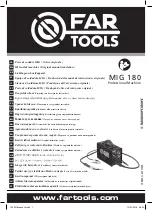
4
VRBS
3.4 User instructions
• Check frequently and before each initial operation
the whole lifting point in regard of linger ability as
a lifting mean, regarding corrosion, wear, defor-
mation etc. (see chapter
4 Inspection / Repair /
Disposal
).
ATTENTION
Wrong positioned or damaged weld-on
lifting points as well as improper use can
lead to injuries of persons and damage at
property, when load falls down.
Please check all lifting points carefully
before every usage.
• RUD components are designed according to DIN
EN 818 and DIN EN 1677 for a dynamic load of
20,000 load cycles.
• Keep in mind that several load cycles can occur
with a lifting procedure
• Keep in mind that, due to the high dynamic
stress with high numbers of load cycles, that
there is a danger that the product will be da-
maged.
• The BG/DGUV recommends: For higher dyna-
mic loading with a high number of load cycles
(continuous operation), the working load stress
must be reduced according to the driving me-
chanism group 1Bm (M3 in accordance with
DIN EN 818-7). Use a lifting point with a higher
working load limit.
• Please check carefully the wear indicator markings
of the weld-on lifting point (see picture 1):
Use prohibited:
Replacement criteria
reached. Material all the
way down to the wear
lenses has gone.
Usage permitted:
no wear marks
visible
Pic. 5: Wear indicators
• Please note that the lifting mean must be free mo-
veable within the weld-on lifting point VRBS. When
lifting means (sling chains) are hinged or unhinged,
no pinching, shearing or joint spots must occure
during the handling.
• Avoid damage of lifting means resulting from sharp
edges.
• If RUD VRBS lifting points are used solely for
lashing, the value of the working load limit can
be doubled. LC = permissible lashing force =
2 x working load limit (WLL)
HINT
If the VRBS is/was used as a lashing point,
with a force higher than the WLL, it must
not be used as a lifting point afterwards.
If the VRBS is/was used as a lashing point,
up to the WLL only, it can still be used af-
terwards as a lifting point.
4 Inspection / Repair / Disposal
4.1 Hints for the regularly inspection
The operator has to determine and dictate the neces-
sary inspection periods and the deadlines by a risk
assessment (see sections
4.2
and
4.3
).
The persisting appropriateness of the lifting poinr
must be checked by a competent person (auditor) at
least once per year.
Depending on the conditions of use e.g. frequent
use, increased wear or corrosion, it may be neces-
sary to carry out inspections at shorter intervals
than once per year. A verification is also required
following damage and after special events.
The operator must specify the test cycles.
4.2 Inspection criteria for the regularly
examination carried out by the operator
• Completeness of the lifting point
• Complete, readable WLL statements as well as
manufacturer sign.
• Deformation on load bearing parts like base body
and ring.
• Mechanical damage, like strong notches, espe-
cially in areas where tensile stress occurs.
4.3 Additional inspection criteria for the
competent person resp. auditor
• Reduction of cross-section due to wear > 10 %
• Evidence of corrosion (pitting)
• Additional inspections may be necessary depen-
ding on the result of the risk assessment (e.g.
incipient cracks at load bearing parts).
4.4 Disposal
Dispose worn out components / attachments or
packaging according to the local waste removal
requirements.
























